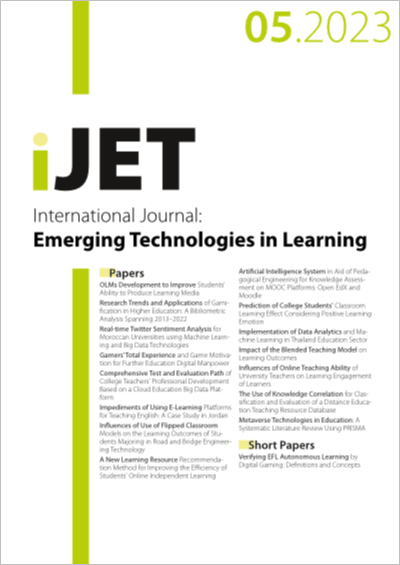The Use of Knowledge Correlation for Classification and Evaluation of a Distance Education Teaching Resource Database
DOI:
https://doi.org/10.3991/ijet.v18i05.38501Keywords:
Knowledge correlation, Distance education, Teaching resource database, Resource classificationAbstract
Teaching information resource database is an important part of distance education in schools. Understanding the classification and characteristics of teaching resources in teaching information resource database can help teachers to search teaching resources more pertinently and make better use of these resources in actual teaching. Therefore, this article studies the classification and evaluation of distance education teaching resource database based on knowledge network. Combining the LSTM model and the conditional random field model, the resource entities that the target resource design knowledge points refer to are extracted from the resource text string of the teaching resource database. The resource entities that the extracted knowledge point refer to are matched and correlated with other resource entities related to the knowledge point in the teaching resource database, so as to realize the link of resource entities in the teaching resource database based on the concept of knowledge points. Starting with the feature extraction of resource text, this article innovates the resource classification algorithm of teaching resource database, and shows the new algorithm flow of feature extraction of resource text. Experimental results verify the effectiveness of the model.
Downloads
Published
How to Cite
Issue
Section
License
Copyright (c) 2023 Nan Zhang (Submitter); Xiaoyi Ma

This work is licensed under a Creative Commons Attribution 4.0 International License.


